Unconquered Sahara. The fate of the "partially recognized" republic
As a rule, unrecognized states arise as a result of ethnopolitical contradictions and conflicts. Moreover, the path to independent existence, albeit without recognition of the “world community”, is usually the only way for such countries - a bloody struggle for national sovereignty, relying on their own strength or on the support of sympathetic or interested states.
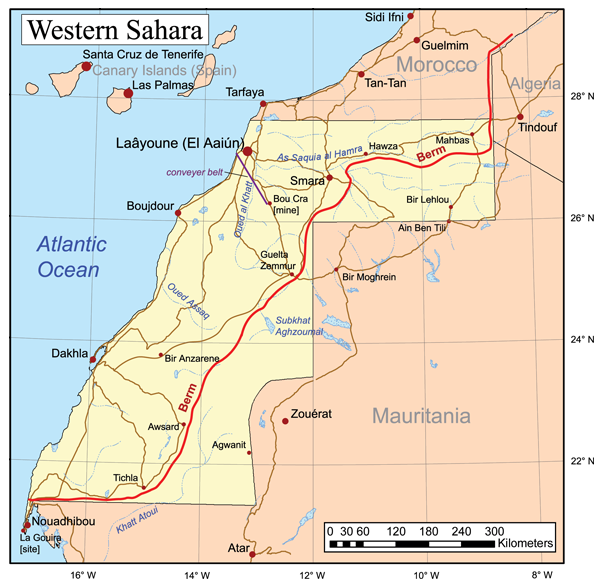
27 February marks Independence Day of the Sahara Arab Democratic Republic (SADR), better known to the Russian-speaking reader as the "Western Sahara". This remote desert state declared its independence back in the 1976 year - thirty-nine years ago. Already Sahrawis were born and reached middle age, whose birth fell on the year of independence, but the country is still among the “partially recognized states”. Unlike many other colleagues in misfortune, Western Sahara still has the recognition of a significant number of countries in the world. SADR recognizes 60 countries of the world - members of the UN, as well as the Republic of South Ossetia - as an independent state. 47 countries of the world have diplomatic relations with SADR, including 29 states exchanged with ambassadors with Western Sahara. However, for nearly forty years, the official status of Western Sahara has remained unclear. This is due to the fact that the country’s territory, located on the northwestern coast of the African continent, where the great Sahara desert is in contact with the Atlantic Ocean, has long been an “apple of discord”. It is claimed by Morocco, which currently controls most of the territory of Western Sahara, and the Saharan Arab Democratic Republic proper, which controls the eastern part of the country.
Land of the "Great Nomads"
Western Sahara is a region specific even by the standards of the African continent. Statehood as such has never existed here - the desert territory was a “tribal zone” where the Berber and Arab tribes wandered. At the same time, in the depths of the desert, the foundations of future Arab-Berber states were formed, conquering not only the lands of North and West Africa, but also the countries of the Iberian Peninsula. The northern part of Western Sahara is called “Segiet el Hamra” - “Red Stream”, and the southern part - “Wadi Zahab”, or in Spanish, “Rio de Oro” - “Golden River”. Since ancient times, the desert lands of Western Sahara were inhabited by the nomadic Berber tribes of Sanhaji, who later underwent Islamization and were partly Arabized. In the process of Islamization, Arabic, more precisely - its North African dialect “Hassania” - was adopted as the main spoken language by the majority of the population of Western Sahara. Only a small part of the nomads living in the northern part of the country, up to the present, maintains the Berber dialect tashelhit.
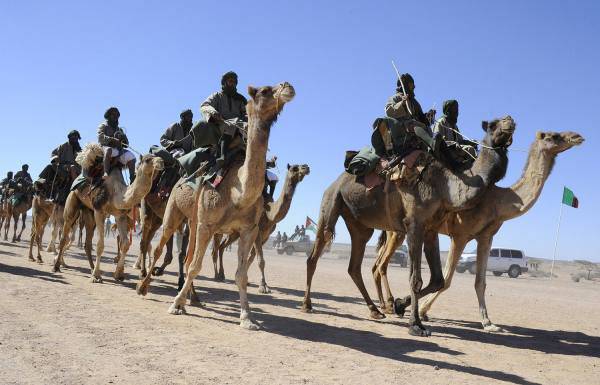
Medieval and New story Western Sahara is a story of “transit” between North and West Africa. It was on the territory of Western Sahara that the core of the tribe union of Sanhaji and Lemtuns, which founded the Almoravid state, was formed. The emergence of this state was the result of the unification of the Arab-Berber tribes of the Sanhaji around the ideas of religious revival. The leader of the Lemtun tribe, Yahya ibn Ibrahim, who made the hajj to Mecca in 1036, returned from there, full of discontent with the order prevailing in his homeland - against the background of the Muslims of Arabia, the mores reigned in the Maghreb seemed to him insufficiently pure.
If Yahya ibn Ibrahim exercised military and political leadership, then Abdullah ibn Yasin al-Guzully became the religious inspirer of the tribes of Western Sahara. This man founded the Almoravid religious order (from the Arabic al-Murabitun - “the people of the ribat”, the ribat is the fortified abode of the dervish orders). After the death of Yahya ibn Ibrahim al-Guzully with his supporters was forced to retire to Senegal, but soon gathered like-minded people and was able to win power in the tribal confederation of Sanhaji. At the same time, Abdullah ibn Yasin al-Guzully remained a religious leader, and the military-political leadership was carried out by the leaders of the Lemtun tribe — first Abu Bekr, then Yusuf ibn Tashfin. Under the leadership of Yusuf, the Almoravidian army conquered Morocco, capturing the largest cities of Fez, Tangier, Tlemcen and Ceuta.
In 1082, the Muslims of Spain, who were defeated in the struggle against the Christian states of the Iberian Peninsula, appealed to the Almoravid emir. Initially, Yusuf refused to Spanish Muslims because of the lack of adequate forces, but two years later, in 1084, he accepted their request and moved troops to the Iberian Peninsula. Initially, having defeated the troops of the king of Castile and Leon Alfonso VI at the Battle of Zallak (1086), the Almoravids left Algeciras fortress behind them and withdrew from the peninsula. However, in 1090, the repeated request for intervention from the Spanish Muslims made the Almoravids appear on the territory of modern Spain and conquer first Granada and Malaga, and in the next 1091, Cordova, Seville and Carmon. In 1102, the Almoravids captured Valencia, and in 1110, Zaragoza. The power of the Western Saharan dynasty of the Almoravids over the southern, Muslim part of Spain persisted throughout the 1086-1146 years, until they were replaced by the Almohadis, representatives of the new religious movement that had arisen among the Moroccan Arab-Berber tribes and accused the Almoravides of abandoning the principles of Islam. The Almohads, whose support was made up by the masmud tribes, which had long rivaled the Sanhaj, the Almoravids' support, retained power from 1147 to 1269. However, their empire was already inferior in size to the Almoravid state, as it included only Muslim Spain and Morocco, but did not extend its power to the territory of Western Sahara and Mauritania.
After disappearing from the political map of the Almoravid state, the territory of Western Sahara actually turned into a non-state space. Here lived Saharan nomads who did not want to bind themselves with any state borders. Only a part of the northern territory of modern Western Sahara was formally controlled by the Moroccan dynasties at different times. Nevertheless, the rulers of Morocco did not cease to regard Western Sahara as a sphere of influence, although they really did not have the ability to control the situation in this region. Meanwhile, the Western Sahara region played an important role in trade and cultural communication between West and North Africa. Caravans from Mauritania, Mali, Senegal, and Guinea traveled through Western Sahara to Morocco and other countries of the Maghreb. In fact, the main trans-Saharan traffic in the western part of the Sahara went through the region. Trade routes were controlled by the "great nomads" of the Sahara, who collected tribute from passing caravans.
Spanish Sahara and the struggle for independence
The growing interest of European countries in the African continent in the XIX century did not disregard the coast of Western Sahara - it attracted the eyes of the Spanish colonialists. If in the XVI-XVII centuries. Spaniards, in accordance with the division of spheres of influence, were more active in the New World, and Africa was given over to the Portuguese, then in the 19th century the ancient agreements on spheres of influence had no power anymore. The African continent was colonized by almost all more or less serious European states. Naturally, the powers of the level of Great Britain or France got impressive and rich in human and natural resources of the territory, and Spain, which had weakened by this time, was forced to be content with the remnants of the “colonial pie” - including Western Sahara, which was unattractive for the colonizers .
In accordance with the results of the Berlin Conference 1884, Western Sahara is in the sphere of influence of Spain. After this decision, Madrid began preparations for the establishment of a colony on the Atlantic coast of the Sahara. In 1886, an expedition of the Spanish Society of Commercial Geography headed by Julio Server Bevera, Felipe Rizzo and Francisco Quiroga arrived in the south of Western Sahara and carried out the necessary topographical surveys in the region. In 1904, the establishment of the Rio de Oro colony, the Golden River, was announced. In 1912, another colony appeared - Cape Hubi, which included part of the territory of Southern Morocco. Under an agreement with France, if independence was granted to the Moroccan state, Spain was obliged to return Cape Hubi to Morocco’s jurisdiction. In 1920, a part of Rio de Oro was separated into a separate colony of Agüera. In 1924, all the Spanish colonies in the region were united into a single colony called the Spanish Sahara. This territory was not part of Spanish Morocco and was governed separately from it.
Naturally, the appearance of the Spanish colonialists in the territory of Western Sahara could not but cause an extremely negative reaction of the local population. The proud and warlike nomads of Western Sahara, who did not know statehood and were faithful to their traditions, did not see themselves as subjects of the Spanish colonial administration. However, the Spanish colonialists did not manage to establish total control over the entire territory of Western Sahara. In the late XIX - early XX centuries. Spaniards, as well as the French who colonized Morocco and Mauritania, faced organized resistance from the Arab-Berber tribes of Western Sahara under the leadership of the religious leader and preacher Ma al-Ainin.
The full name of this person looks very personable - Muhammad Mustafa Ould Sheikh Muhammad Fadil bin Mamin al-Kalkami (1831-1910). He was born in 1831 in the family of Sheikh Muhammad al-Fadil, who founded the Sufi tariqah (religious brotherhood) Fadiliyah. In 1860, Mr. Ma al-Ainin led a part of the Fadiliya brotherhood, on the basis of which he later created his own religious fraternity, Ainiya. In 1887, the Sultan of Morocco granted him the title Kaida. In Western Sahara and Mauritania, Ma al-Ainin gained a large number of supporters, and in 1897, the concession (branches) of the Ainiya Ma al-Ainin brotherhood was allowed to open in Morocco - the then sultan Moulay Abd al-Aziz was very supportive of religious activities. preacher.
In 1898, the city of Ma al-Ainin began the construction of the city of Smara in the area of Segiet el-Hamra. There were built a fortress, large mosques, shopping malls - everything you need to turn the city into the administrative, cultural and economic center of Western Sahara. When French and Spanish expansion in Morocco and Western Sahara intensified, Smara became the center of anti-colonial resistance, and Ma al-Ainin became the leader of the rebel tribes of Western Sahara. He considered his goal to fight the European colonialists, putting forward the idea of jihad against the opposing conquerors. For a long time, the French and Spanish military authorities could not cope with the followers of Ma al-Ainin, who carried out guerrilla raids on military posts.
For a long time, the Spanish Western Sahara remained a peripheral and unattractive colony for Madrid. The Spanish government paid much more attention to Spanish Morocco and Spanish Guinea. Nevertheless, on the territory of the Spanish Sahara even their own colonial troops were formed, which were in the service of the Spanish government - the “Nomad Troops”, or Tropas Nomadas. The rank and file of these units was recruited from the representatives of the local Arab-Berber population, and the officer posts were occupied by Spanish soldiers. In addition to the "Nomad Troops", "desert police" were also stationed in Western Sahara, formed according to a similar principle.
Moroccan claims
The military-political situation in the region began to change after Morocco gained state independence in 1956. Since Morocco has long considered the Western Sahara its territory, Spain was immediately made territorial claims. The first stumbling block was the enclave of Sidi Ifni, a city in southern Morocco, which fell under Spanish rule in 1860 and was part of the colony of Spanish West Africa at the time of Moroccan independence. Morocco considered Sidi-Ifni its territory, illegally seized by the Spaniards, and in 1957, Madrid demanded the release of the city. 10 April 1957 in Ifni began riots, provoked by Moroccan agents. General Francisco Franco, who was at that time at the head of the Spanish state, transferred army units of the Spanish Legion to Western Sahara. 23 October 1957 A detachment of 1,5 thousand Moroccan soldiers captured the suburbs of Sidi Ifni, the villages of Gülmen and Bu-Isargen. November 23 began the assault of Ifni by a two-thousand Moroccan division. The siege of Ifni began. The war was fought by a few infantry units - from both the Spanish and the Moroccan side.
For two weeks, Moroccan troops retained control of almost the entire territory of Ifni. The city was under siege, and Spanish military posts were constantly attacked by mobilized militias of the Western Sahara tribes. The defense of Sidi Ifni was carried out by up to 7500 troops of the Spanish army and militias. The siege of the city lasted for more than six months - until June 1958. In February 1958, the Spanish troops, together with the French units that came to the aid, intensified efforts to liberate the colony from Moroccan troops. At least 9000 Spanish and 5000 French soldiers and officers were concentrated in Ifni, as well as 150 aircraft. Application aviation did the trick. In April 1958, Spain and Morocco signed an agreement under which Spain retained dominance over Ifni, but ceded the territory of Cape Hubi to Morocco.
However, after the agreement, Morocco’s subversive activities in Western Sahara continued. The Moroccan authorities continued to regard the territory of Western Sahara as their sphere of influence and hoped that the Spaniards would sooner or later free the colony, and it would come under the control of Morocco. A decisive role in the liberation of Western Sahara from Spanish rule was played by the weakening of Spain after the death of Francisco Franco. 6 in November 1975 organized the so-called Morocco. Green March to Western Sahara, in which about 350 thousands of people took part. 18 November 1975 Spain signed the Madrid Agreement, according to which the Spanish administration was withdrawn from the territory of Western Sahara and the region was placed under the control of Mauritania and Morocco.
POLISARIO
However, Spain, Morocco and Mauritania did not take into account the interests of the population of Western Sahara, some of which insisted on granting political independence to the region. The front of the POLISARIO-Narodny front for the liberation of Segiet el-Hamra and Rio de Oro (Frente Popular de Liberación de Saguía el Hamra y Río de Oro; Abbreviated POLISARIO) became an expression of the interests of the supporters of independence. It was created in May 1973 by a group of Western Saharan students led by El-Wali Mustafa Syed (1948-1976).
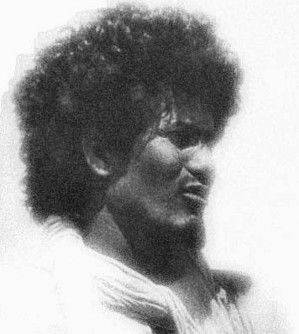 El-Wali was a native of Western Sahara, born in one of the nomadic Bedouins of the Bedouins. In 1966, a young man entered the Islamic Institute in Taroudant, then - at the Institute in Rabat, where he studied law and political science. While studying at the institute, El-Wali met other radical young people from Western Sahara. The young people were greatly impressed by the events of May 1968 in Paris. After graduation, El-Ouali visited the Netherlands and France. He was very concerned about the political situation in his native Western Sahara and in 1972, after returning to his homeland, set about creating the Movement for the Liberation of Segiet el Hamra and Rio de Oro. In June, 1972. Al-Ouali’s supporters staged a demonstration in Tan-Tan, after which they were all arrested. After the liberation of El-Ouali, he founded the Frente POLISARIO.
El-Wali was a native of Western Sahara, born in one of the nomadic Bedouins of the Bedouins. In 1966, a young man entered the Islamic Institute in Taroudant, then - at the Institute in Rabat, where he studied law and political science. While studying at the institute, El-Wali met other radical young people from Western Sahara. The young people were greatly impressed by the events of May 1968 in Paris. After graduation, El-Ouali visited the Netherlands and France. He was very concerned about the political situation in his native Western Sahara and in 1972, after returning to his homeland, set about creating the Movement for the Liberation of Segiet el Hamra and Rio de Oro. In June, 1972. Al-Ouali’s supporters staged a demonstration in Tan-Tan, after which they were all arrested. After the liberation of El-Ouali, he founded the Frente POLISARIO. 20 May 1973, five days after the founding of the front, El-Ouali and Brahim Gali, at the head of six partisans, attacked the Spanish military post of El-Khang. Thus began the war for the independence of Western Sahara, stretching for many decades. In April, 1974, El-Wali, led the POLISARIO delegation to the Pan-African Youth Congress in Benghazi, Libya. The activization of the divisions of the front in the territory of Western Sahara also belongs to this time. In 1974-1975 Polisario gradually claimed control of the Bedouin nomads, gained prestige among the people of Western Sahara. By the time Spain abandoned the colonial administration of Western Sahara in 1975, the POLISARIO remained a relatively small organization of 800 people, although it had political influence on an incomparably larger number of people in Western Sahara.
 After Spain withdrew from the administration of Western Sahara and transferred the region under the rule of Morocco and Mauritania, the front of Polisario 27 in February 1976 of the year proclaimed the creation of an independent Saharan Arab Democratic Republic. Now the guerrilla warfare divisions of the front led against the Moroccan and Moorish armies. After the death of El-Wali Mustafa Sayed, the Secretary-General of the Frente POLISARIO and the President of the Saharaw Arab Democratic Republic of 30 in August, Mohammed Abdel Aziz became 1976. He was born on August 17 1947 in a Moroccan Marrakesh, in a Bedouin family. After studying in Rabat, Abdulaziz became an ally of Ouali to create the Frente POLISARIO.
After Spain withdrew from the administration of Western Sahara and transferred the region under the rule of Morocco and Mauritania, the front of Polisario 27 in February 1976 of the year proclaimed the creation of an independent Saharan Arab Democratic Republic. Now the guerrilla warfare divisions of the front led against the Moroccan and Moorish armies. After the death of El-Wali Mustafa Sayed, the Secretary-General of the Frente POLISARIO and the President of the Saharaw Arab Democratic Republic of 30 in August, Mohammed Abdel Aziz became 1976. He was born on August 17 1947 in a Moroccan Marrakesh, in a Bedouin family. After studying in Rabat, Abdulaziz became an ally of Ouali to create the Frente POLISARIO. Initially, the Frente POLISARIO was a classical left-nationalist organization, for which the main goal was to achieve political independence in Western Sahara. The controversies about the future political and economic structure of the country were sought by the leaders of the POLISARIO to postpone for the period after the achievement of real sovereignty. That is why the organization called itself the Front, and not the party, emphasizing that it appeals to all segments of Western Sahara society. At the beginning of the 1970's. the organization adhered to a socialist orientation, although it did not proclaim itself Marxist-Leninist and even socialist, but already at the end of the 1970s. moved to the position of nationalism without socialist rhetoric.
In 1976-1978 the number of armed detachments of the POLISARIO has grown to several thousand armed militants. The army of the front moved from camels to modern Spanish-made jeeps captured during attacks on Moroccan military posts. Muskets and rifles were replaced by machine guns supplied by Algeria and Libya. On the territory of Algeria, frontline militants underwent combat training in training camps.
Sahara war
Mauritania was the weakest adversary of the Polisario. The armed forces of this West African country were not distinguished by their multiplicity and equipment, and the economy was weak even by the standards of the poor countries of the Sahara and the Sahel. The number of armed forces under President Moktar Ould Dadd did not exceed 3 000 soldiers and officers. Moreover, the Moorish army was not distinguished by a high level of training and discipline.
A serious problem was the ethnic contradictions in the armed forces of Mauritania. As is known, two main groups of the population live in Mauritania - the Arab-Berber tribes of Northern Mauritania and the Negroid peoples of Southern Mauritania. Conscripts - Africans from South Mauritania did not want to take part in the hostilities, which they considered as an internal problem of the Arab-Berber tribes of the North - after all, the possession of the territory of Western Sahara has never been among the interests of the African population of South Mauritania. Finally, the Arab-Berbers of Mauritania themselves greatly sympathized with the struggle of the Frente Polisario, as they feared the growing influence of Morocco in the region as a result of the establishment of Moroccan domination over Western Sahara. In the armed forces of Mauritania, unrest began, on the other hand, it began to suffer losses and the country's economy, undermined by the conduct of hostilities.
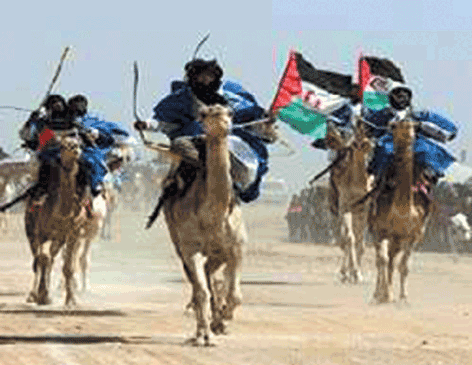 After the hostilities of the Western Saharan guerrillas made copper mining in Mauritania impossible (this export yielded up to 90% of national income), and the Polisario rebels fired on the capital of Mauritania, Nouakchott, the Mauritanian government abandoned plans to retain part of Western Sahara. Moreover, in 1978, a military coup took place in the country that overthrew the Ould Daddy regime, and the new Moorish leadership somewhat revised its views on the problem of Western Sahara. In 1979, the government of Mauritania withdrew troops from the country. Moreover, in 1984, Mauritania officially recognized the Saharawi Arab Democratic Republic as an independent state.
After the hostilities of the Western Saharan guerrillas made copper mining in Mauritania impossible (this export yielded up to 90% of national income), and the Polisario rebels fired on the capital of Mauritania, Nouakchott, the Mauritanian government abandoned plans to retain part of Western Sahara. Moreover, in 1978, a military coup took place in the country that overthrew the Ould Daddy regime, and the new Moorish leadership somewhat revised its views on the problem of Western Sahara. In 1979, the government of Mauritania withdrew troops from the country. Moreover, in 1984, Mauritania officially recognized the Saharawi Arab Democratic Republic as an independent state. Morocco turned out to be a tighter nut. First, the public reaction in Morocco to the Sahara war was completely different from the Moorish war. The population of Morocco largely supported the actions of the monarchical government to establish domination over the Western Sahara, which was regarded as a legitimate Moroccan territory. Secondly, Morocco did not want to strengthen Algeria, which provided full support to the Frente POLISARIO and, accordingly, if Western Sahara reached independence, it would seriously strengthen its position in the North and West Africa region. The king of Morocco was not going to give up power over Western Sahara and concentrated in the region impressive units of the Moroccan army - one of the strongest in North Africa. Moroccans occupied the part of Western Sahara, which was previously assumed as the area of responsibility of Mauritania.
In turn, the POLISARIO gained the support of Algeria, Libya and several other African states, as well as some national liberation movements in Asia, Africa and Latin America. Algeria, Libya and Cuba provided military assistance to the POLISARIO. Muammar Gaddafi, although not directly involved in the conflict on the side of the Polisario, did not hide his sympathies for the national liberation struggle of the Saharan people. As for the Algerian leadership, it remained the most loyal ally and patron of POLISARIO, providing the front with diplomatic, financial and military assistance. In fact, it was thanks to the Algerian assistance that the POLISARIO became a serious military and political force.
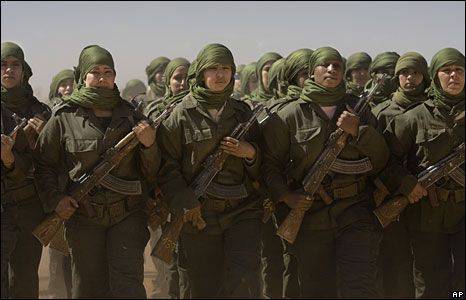 It was on the initiative of Algeria that SADR, by 1980, was already recognized by 45 by the countries of the world, primarily by African states, since Algeria was vigorously pushing the idea of joining SADR to the Organization of African Unity (OAU). As a result of years of war, the Western Saharan rebels managed to create a well-trained and well-armed People’s Army liberating the Sahara. By 2010, the number of armed forces of the POLISARIO reached 15-20 by thousands of people armed not only by small weaponsbut also artillery, tanks, infantry fighting vehicles.
It was on the initiative of Algeria that SADR, by 1980, was already recognized by 45 by the countries of the world, primarily by African states, since Algeria was vigorously pushing the idea of joining SADR to the Organization of African Unity (OAU). As a result of years of war, the Western Saharan rebels managed to create a well-trained and well-armed People’s Army liberating the Sahara. By 2010, the number of armed forces of the POLISARIO reached 15-20 by thousands of people armed not only by small weaponsbut also artillery, tanks, infantry fighting vehicles. "Free Zone" under the authority of SADR
Despite the fact that Moroccan troops in the territory of Western Sahara reached 110 thousands of soldiers and officers, Morocco was not able to defeat the People’s Army for the Liberation of the Sahara. Moreover, in 1980, the Moroccan command, exhausted by the tactics of guerrilla raids of POLISARIO mobile groups, moving in jeeps and attacking military posts, decided to create a “defensive wall” of six walls - a system of military obstacles with electronic tracking systems and the largest in the world minefield. Shaft construction continued from 1981 to 1987. Initially, fortifications separated the most important cities of Western Sahara - Laayoune and Smara. Then a few more lines of defense were created. Along the perimeter of the shaft, 500 military posts were equipped and impressive numbers of Moroccan armed forces were deployed.
The Saharas call this line the “Wall of Shame”. In fact, the shaft separated most of the territory of Western Sahara, controlled by Morocco, from the deep belt bordering Mauritania, which remained under the control of the Polisario. This deep lane is currently known as the “Free Zone”. In 1991, POLISARIO and Morocco signed a ceasefire agreement, according to which the territories to the west of the wall remained under Moroccan administration. Compliance with the agreements was guaranteed by the presence of United Nations peacekeeping forces in the region.
The POLISARIO Guide defines the “Free Zone” as a vacated territory. Movement of Moroccan troops on this territory is limited. In the "Free Zone" lives from 30 to 40 thousands of people. Mostly they are nomadic tribes engaged in traditional camel breeding and wandering between Western Sahara, Mauritania and Algeria. In fact, the “Free Zone” is the territory of the Sahara Arab Democratic Republic, which is actually controlled by POLISARIO, however, most POLISARIO institutions operate in emigration, since the territory of the “Free Zone” does not prevent the creation and development of a full-fledged infrastructure. About 100 thousands of Saharans continue to live in refugee camps in Algeria. Entire generations of Saharans, who did not see their ancestral lands and were deprived of the possibility of living in their historic homeland, grew up. Sahara youth are forced to receive education in universities of Algeria, Cuba and Spain.
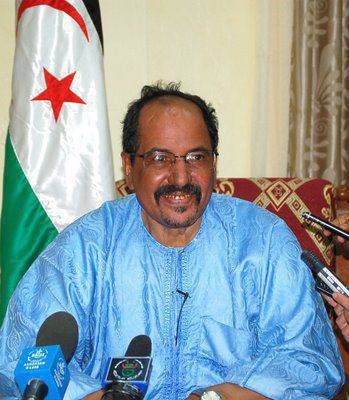 In an effort to gain the support of Western states in achieving political independence, the Frente POLISARIO reoriented itself to a liberal ideology. Mohammed Abdelaziz, who remains the President of the SADR right up to the present, seeks to emphasize his loyalty to the principles of multi-party democracy and a market economy, but the political situation in Western Sahara does not change. Since Morocco has always been considered one of the important partners of the United States in the Maghreb, the American authorities do not wish to recognize the political independence of Western Sahara. During the Cold War between the United States and the Soviet Union, neither the US nor the Soviet leadership openly spoke in support of any of the parties to the conflict. POLISARIO and Maoist China did not help, as a whole, it showed an interest in such national liberation movements.
In an effort to gain the support of Western states in achieving political independence, the Frente POLISARIO reoriented itself to a liberal ideology. Mohammed Abdelaziz, who remains the President of the SADR right up to the present, seeks to emphasize his loyalty to the principles of multi-party democracy and a market economy, but the political situation in Western Sahara does not change. Since Morocco has always been considered one of the important partners of the United States in the Maghreb, the American authorities do not wish to recognize the political independence of Western Sahara. During the Cold War between the United States and the Soviet Union, neither the US nor the Soviet leadership openly spoke in support of any of the parties to the conflict. POLISARIO and Maoist China did not help, as a whole, it showed an interest in such national liberation movements. However, the actual behavior of the great powers made it clear to the Frente POLISARIO that they should not count on help. The United States of America SADR did not recognize and focused on economic and political cooperation with Morocco. The USSR and the countries of the socialist bloc also did not recognize the independence of SADR, not wanting to spoil relations with Morocco. Thus, for a long time, the Frente POLISARIO depended solely on support from Algeria, which remained the main ally of the SADR for three decades, as well as Libya (before 1983) and some other third world countries. On the other hand, left-wing and liberal political parties and movements were periodically expressed in support of the POLISARIO in several countries of Western Europe - primarily in Spain, as well as in the Scandinavian states. In recent years, the Front has increasingly actively declared itself as the opponent of terrorism and Islamic radicalism in North and West Africa.
At present, in the Sahara Arab Democratic Republic, the head of state is the president (from 1976, Mohammed Abdel Aziz), who appoints the country's prime minister (now Abdel Qadir Taleb Umar). The power structure includes the SADR Council of Ministers, the judicial branch and the National Council of the Sahara. The SADR parliament is weak because, despite the stated policy of democratizing governance, it is still not possible to completely separate the party and state leadership lines.
As noted above, SADR currently recognizes the 60 states of the world. Among the immediate neighbors independence SADR recognized Algeria, Mauritania, Mali. Also on the list of recognized states are African countries - Ghana, Nigeria, Angola, Mozambique and almost all countries of Eastern and Southern Africa. The independence of SADR was recognized by the Asian countries of the socialist camp - Vietnam, Laos and North Korea. Independence SADR recognized by Syria and Western Sahara has in this country its diplomatic representation. In Latin America, the independence of SADR was recognized by Cuba, Venezuela, Bolivia, Ecuador, Mexico and a number of other states. Western Sahara was the first state to recognize East Timor’s independence and establish diplomatic relations with it. Also, the independence of SADR was recognized in 2011 by the newly formed state of South Sudan. As for the Russian Federation, it did not recognize the independence of the Saharawi Arab Democratic Republic, but did recognize the right of the people of Western Sahara to self-determination. The United States of America takes a different position - they support the right of the people of Western Sahara to create an autonomous region within Morocco. Finally, on the side of Morocco are other Arab monarchies of the Middle East, China and several other countries that have important economic and political ties with Morocco.
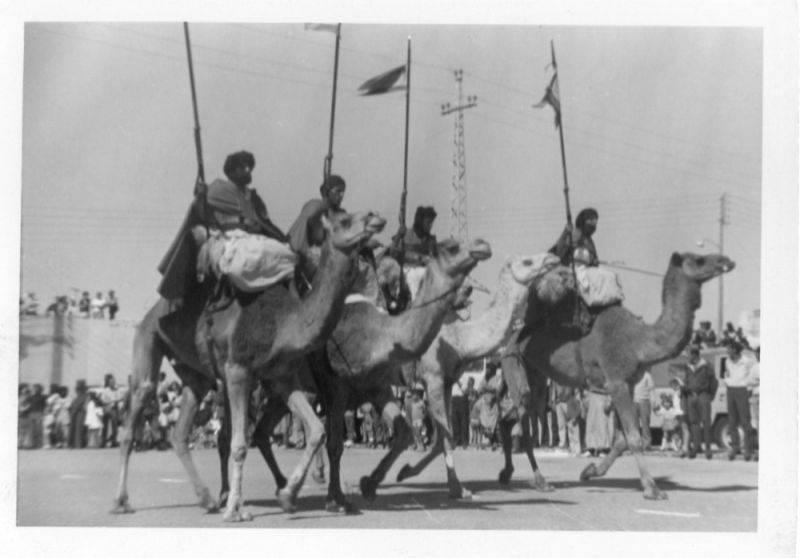
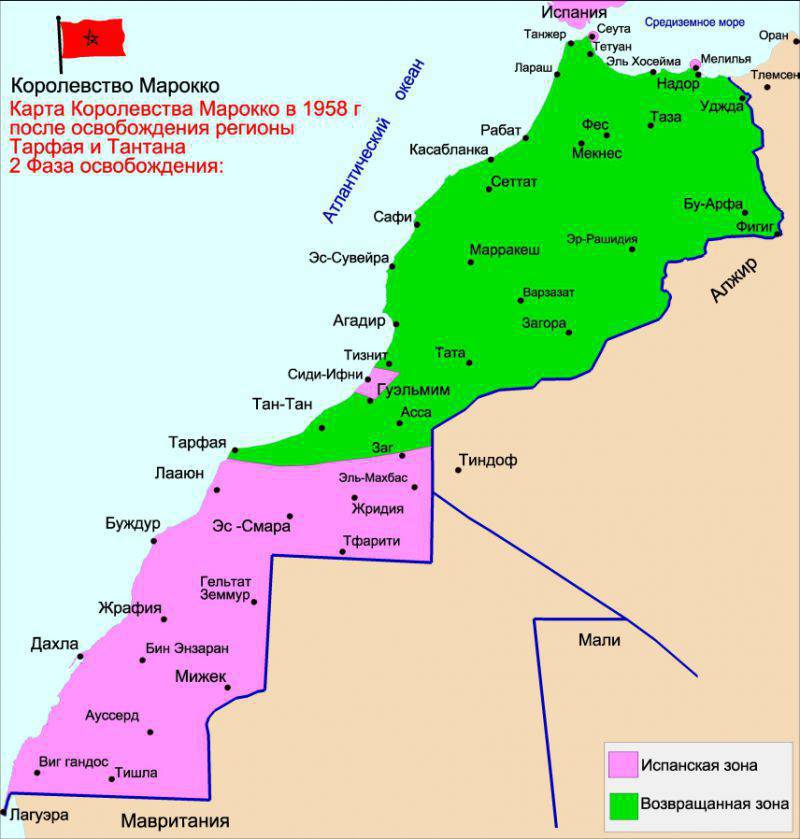
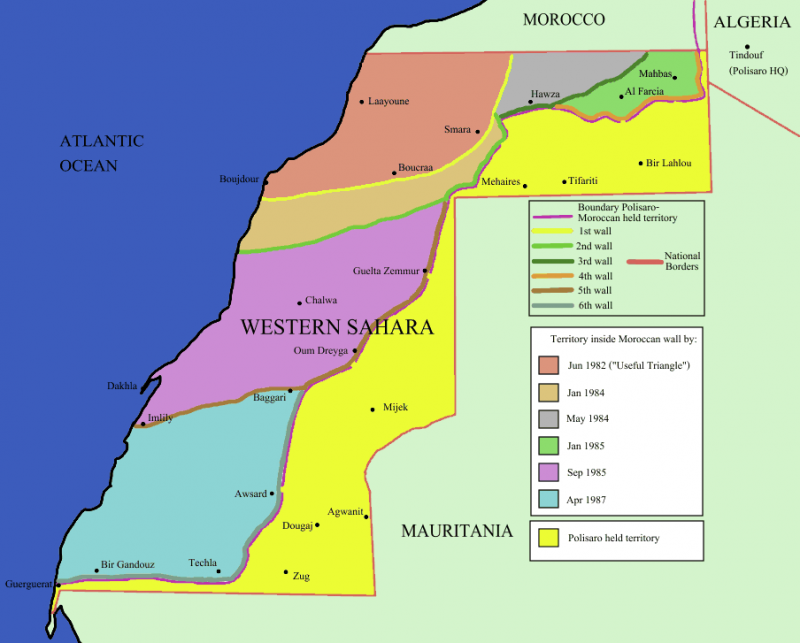
Information